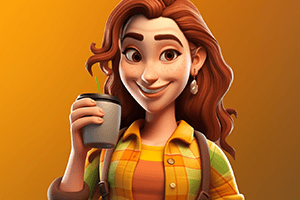
The Ultimate Guide to Brewing 12 Cups of Coffee: Finding the Right Amount of Ground Coffee
Brewing 12 cups of coffee can be tricky without the right amount of ground coffee. Our guide will help you find the perfect amount for a delicious brew.
The Ultimate Guide to Brewing 12 Cups of Coffee: Finding the Right Amount of Ground Coffee If you're a coffee lover, you know how important it is to get the perfect taste and aroma from your brew. One of the crucial elements of a good coffee is the right amount of ground coffee. In this guide, we will explore the factors that affect the amount of coffee needed to brew 12 cups and how to find the perfect amount for your taste. Factors That Affect the Amount of Ground Coffee Needed There are a few factors that can affect the amount of ground coffee needed to brew 12 cups. The first factor is the type of coffee bean you're using. Different types of beans have different densities, which can affect the amount of coffee needed. For instance, a light roast coffee will require more coffee per cup than a dark roast coffee. The second factor is the grind size of the coffee. If you're using a coarser grind, you'll need more coffee to get the right strength. If you're using a finer grind, you'll need less coffee. Lastly, the brewing method can also affect the amount of coffee needed. If you're using a drip coffee maker, you'll need less coffee than if you're using a French press or a percolator. Finding the Right Amount of Ground Coffee Now that you know the factors that can affect the amount of ground coffee needed, let's explore how to find the perfect amount for your taste. The general rule of thumb is to use one to two tablespoons of ground coffee per six ounces of water. This means that for 12 cups of coffee, you'll need between 24 and 48 tablespoons of ground coffee. However, this is just a starting point. You'll need to adjust the amount of coffee based on your taste preferences and the factors we discussed earlier. If you prefer a stronger coffee, you'll need to use more coffee. If you prefer a milder coffee, you'll need to use less coffee. To find the perfect amount of ground coffee, start with the general rule of one to two tablespoons per six ounces of water. Brew a pot of coffee and taste it. If the coffee is too weak, increase the amount of coffee. If the coffee is too strong, decrease the amount of coffee. Keep adjusting the amount of coffee until you find the perfect balance for your taste. Conclusion Finding the right amount of ground coffee is essential for getting the perfect cup of coffee. Remember to consider the type of bean, the grind size, and the brewing method when determining the amount of coffee needed. Start with the general rule of one to two tablespoons per six ounces of water and adjust based on your taste preferences. With a little experimentation, you'll find the perfect amount of coffee for your perfect cup of coffee.
